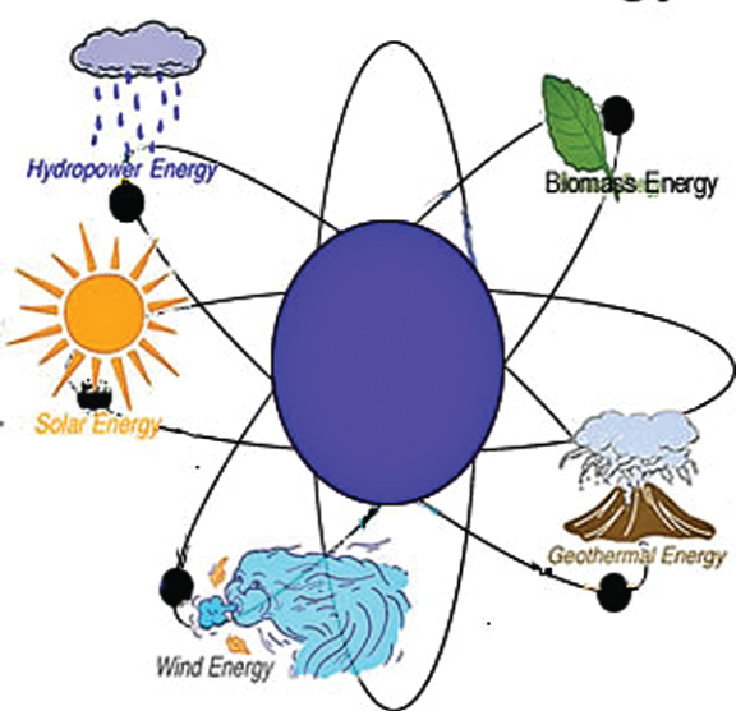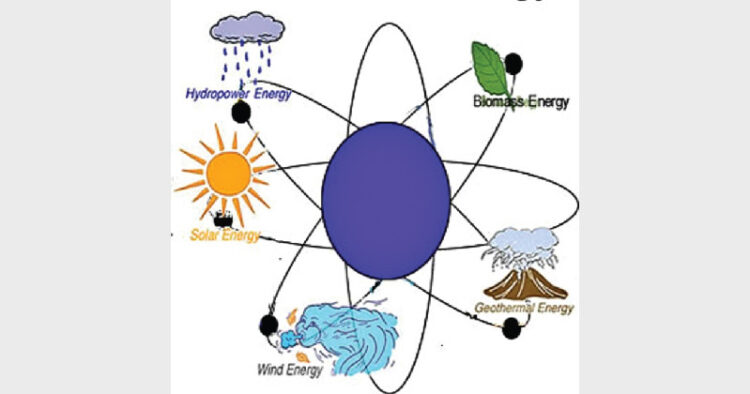 Besides mega projects, India is also seeing a rapid expansion of small-scale renewable systems to provide electricity. To attain the ambitious targets enough precautions are necessary
Besides mega projects, India is also seeing a rapid expansion of small-scale renewable systems to provide electricity. To attain the ambitious targets enough precautions are necessary
Debajit Palit
India recognised the importance of increasing use of renewables in the transition to a sustainable energy base during the 1970’s and since then a significant effort has gone into the development, trial and induction of renewable energy technologies for use in different sectors of the economy. The renewable energy sector has, however, leapfrogged in the last two years, especially the solar power generation, with the country’s solar power capacity doubled to almost 7GW in last 18 months. From the start of this decade, the solar power capacity has grown from a mere 17.8 MW in March 2010 to nearly 7GW in April 2016. While the above achievements are noteworthy, many experts believe that the renewable energy boom is yet to come, as India aims to realise its ambitious target of 175 GW of installed renewable energy capacity by 2022.
Probably, India is currently implementing one of the largest renewable energy expansion programmes globally with the long-term objective to achieve 40% of cumulative electric power installed capacity from non-fossil fuels by the year 2030. India has also taken the lead to form the International Solar Alliance at the UN Climate Change Conference in Paris on 30 November last year, to collaborate on increasing solar energy use around the world.
The Prime Minister, Narendra Modi, upped the 2022 target for solar capacity generation under the National Solar Mission, from 20 GW to 100 GW in June 2015. This includes around 60 GW from utility-scale solar and 40 GW roof-top solar. The government also scaled-up the target for renewables-based power capacity by more than 5 times from 32 GW in 2014 to 175 GW by 2022, which includes the 60 GW from wind, 10 GW from biomass energy and 5 GW of small hydropower in addition to the solar target. Another key development, as notified in the new tariff policy, is that the electricity distribution companies (discoms) has been mandated to procure 100% power produced from all the waste-to-energy plants in the State, which will also expected to contribute to the Swachh Bharat initiative.
While India has achieved significant success in the onshore wind power development with about 25 GW of wind energy capacity already installed, the national off-shore wind energy policy was released in October 2015 to set up wind generators both within Indian territorial waters and exclusive economic zone.
Electricity being a concurrent subject, state participation is equally important to achieve the ambitious objectives. The central electricity regulator has taken steps to encourage state participation by mandating state electricity discoms to source 8% of electricity from renewable energy sources (excl. hydro power) by March 2022, waiving of the interstate transmission charges and losses for solar and wind. Twenty states have also released their state solar policies for roof-top and utility-scale solar projects.This sector is also included in priority sector lending norms.
In the small-scale renewable energy sector, an important development has also been the explicit reference to renewable energy based mini-grids within the National Tariff Policy, notified in last January. The tariff policy has recognised the importance of ensuring last mile connectivity by creating an enabling condition for investing in mini-grids and also mandated for appropriate regulation to make these viable.
While tariff-based bidding for solar power has seen the rates plummet to as low as Rs 4.35 per kWh, the pace of project implementation appears slow. Though more than 20,000 MW solar projects were tendered in 2015-16, the actual achievement during the year was 6763 MW. Financing appears to be one of the key challenges limiting faster scale-up in the sector. On the positive side regarding financing, the World Bank has recently committed to lending more than $1 billion to support India’s solar energy initiative, including a $625 million for grid-connected rooftop solar programme. The US government and some of the other bilateral agencies are also supporting programme.
Another key challenge, which the solar sector may have to address in future as capacities are scaled-up, is land availability. With large tracts of land being used for agriculture in most states, finding adequate land in one site for utility-scale solar projects may pose a challenge. To address the challenges in terms of land availability, transmission and evacuation lines, access roads, availability of water etc., the solar park scheme was initiated with a cumulative capacity target of 20GW. Besides that, states are provided assistance to establish solar parks, each with a capacity above 500 MW.
The financial ill-health of the state discoms is another challenge as they are the ones who will have to procure the power from renewable energy power plants. The central government, taking cognisance of such challenge and for ensuring 24/7 power for all, has launched the Ujjwal Discom Assurance Yojna (UDAY) in November 2015 to transfer the liabilities of the state discoms to the balance sheets of state governments, conditional on improved performance and with provisions for tariff increments to offset any rise in conventional fuel prices. However, the performance of the scheme will hinge on actual improvement in the discoms’ operation.
In case of rooftop solar, while there has been more than 1000% increase in capacity addition in the last 2 years (higher growth is mainly due to lower base), in the year ahead it may be difficult to achieve such growth. Some of the critical issues are disaggregated and distributed demand, which is often not visible to developers; difficulty in obtaining attractive project debt; availability of adequate roof space and their structural stability; and value chain issues such as quality assurance, skilled manpower etc. One way to address the challenge will be to ensure that all new institutional and housing society roofs are used for setting up PV plants. Railway stations and warehouses are also good sites for roof-top power plants. Further technology development towards producing lightweight solar panels will help in this regard.
Renewable energy mini-grids are promoted by Ministry of Power (MoP) under the Deendayal Gram Jyoti Yojana as well as by the Ministry of New and Renewable Energy (MNRE) under their various programmes. Around 3500 projects have been sanctioned under the Decentralised Distributed Generation scheme of MoP to cover remote un-electrified villages where extending grid is economically daunting.
However, in the case of mini-grids and small renewable energy systems, a point worth highlighting is that end-users of renewable energy-based mini-grids often compare the cost of electricity to that from the main grid and are therefore prone to believe that expensive power is being sold to them. To bring parity and at the same time ensure the viability of micro-grids, the regulators could think of creating a universal service obligation fund, through a suitable mechanism, such as cross-subsidy or levying a cess on conventional electricity. Using Aadhar platform, this amount can be used to provide a direct subsidy to underprivileged consumers.
While the developments in the sector are very positive, what is needed is to ensure that the different challenges are addressed on priority, through consultations with all stakeholders, for electricity access to all households with affordable consumer tariffs, ease of doing business by the developers and achieving the developmental and climate goals.
(The writer is Associate Director & Senior Fellow at TERI. Views are personal)














Comments